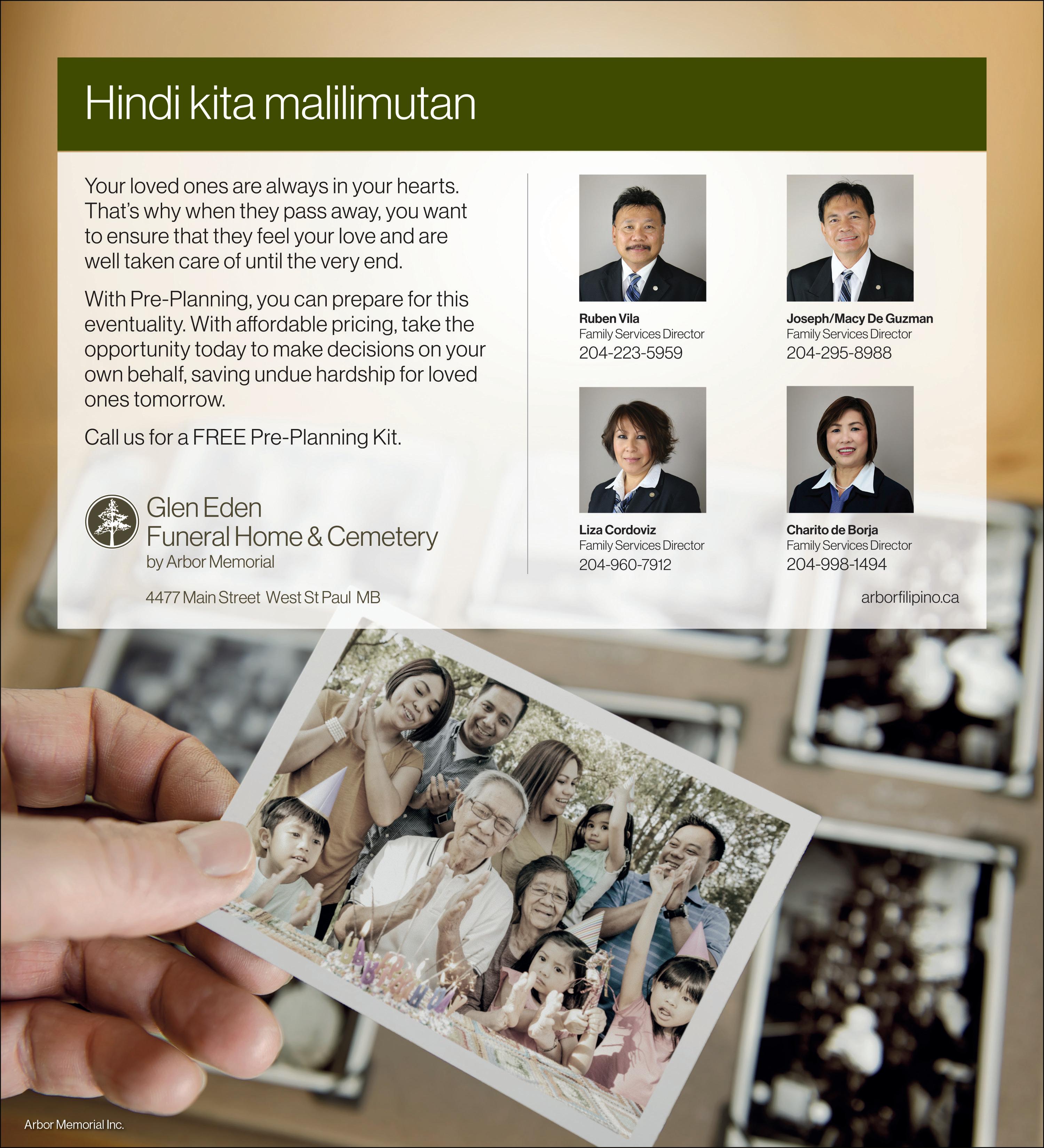Vina Morales





Every year, CBC Manitoba recognizes an outstanding group of young Manitobans under the age of 40 who are making a difference in their communities.
This year, the 10 awardees include creative business owners, grassroots organizers, scientists, and fundraisers. One of them is educator and music artist, Paul Ong.

Since 2015, the internationally trained educator has been selling out his annual Concerts for a Cause, which gives him and participating students an opportunity to share their musical gifts and engage the community to bring positive change.
The concerts have so far raised over $100,000 for local charities.



Pilipino Express (PE) recently spoke with Paul Ong (PO) about the recognition and what it means to him and for his community
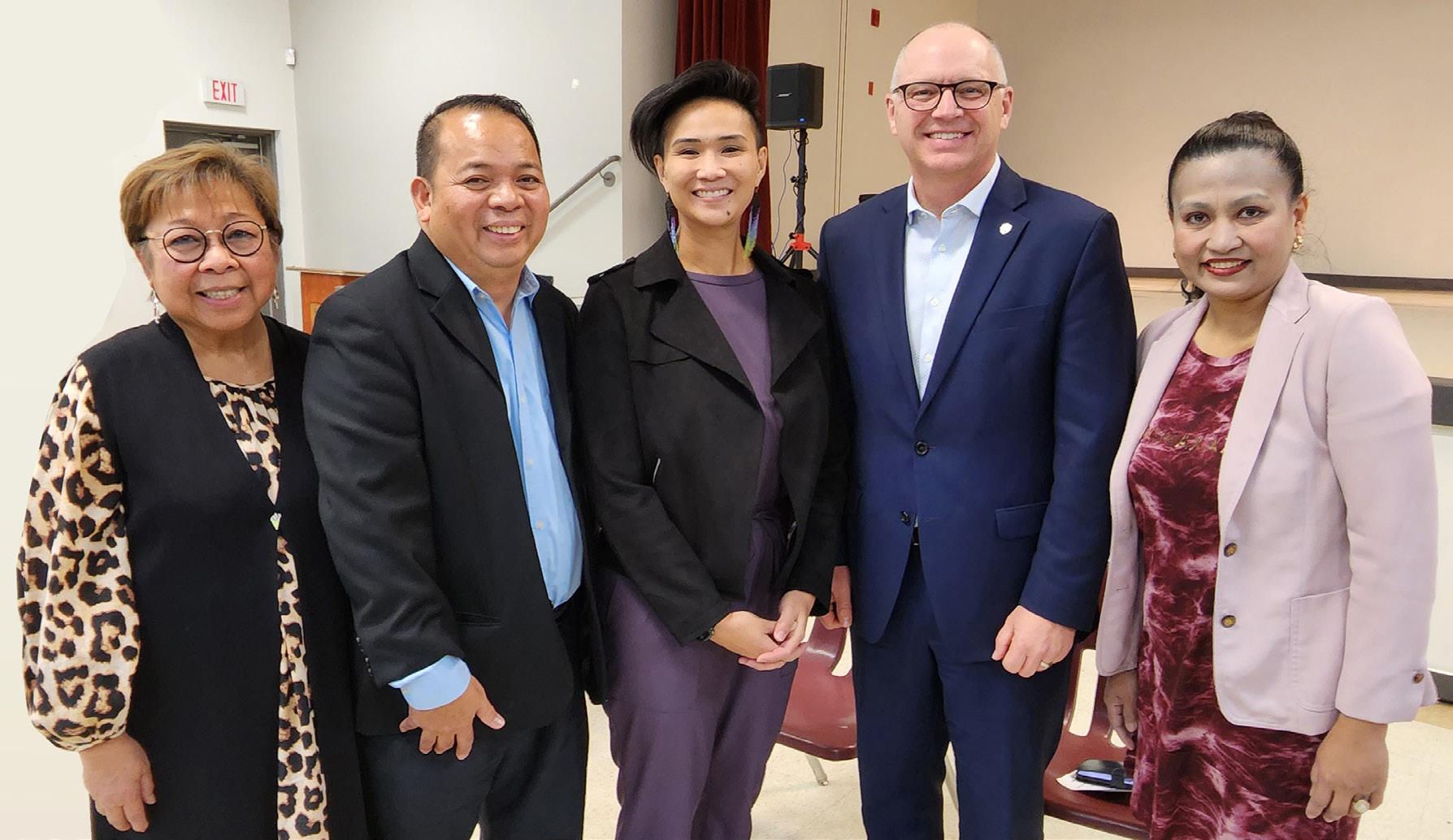








In Manitoba, the first few weeks of November have seen a significant rise in COVID-19, flu and respiratory syncytial virus (RSV) cases. Compared to prepandemic levels three years ago in 2019, there are approximately three times the normal number of influenza patients right now. What is more concerning is the number of young children who are getting sick, with some requiring hospital admission.
This is leaving a lot of people wondering about what the holiday season will look like, and whether they will feel well enough to attend gatherings and parties. Many are surprised by how many people they know who are sick.
There are many factors
contributing to high illness levels around the holiday season. Our routines tend to be off because of more social gatherings, which can involve alcohol consumption. This often results in less exercise and poor sleep. People tend to eat more sweets, fatty and processed foods rather than healthy meals.
In addition, stress levels can go up because of more social commitments and pressure to spend money. Let’s also remember that Christmas is not always joyful and fun for everyone. People who are socially isolated and those who have lost a loved one might feel depressed around the holidays.
For some people, it has been years since the last “normal” holiday gathering and it’s exciting
to think about having Christmas traditions back again. So, if your goal is to stay as healthy as possible until the festivities begin, here are some important tips to protect yourself and your family from the spread of germs:
1. Limit “unnecessary” personal contact.
This may take some advanced planning, but you can minimize contact with others by shopping at less busy times of the day and avoiding congested areas. You may want to rethink any travel or getting in close contact with people outside of your household. Avoid hugs and handshakes, and if you know that someone is ill, keep your distance.
2. Consider getting a flu vaccine.
Research has shown that the flu shot reduces illnesses, trips to the doctor, hospitalizations and even deaths. For people with chronic health conditions, it is important to get a flu vaccination. For more information, contact your family doctor.
3. Wear a mask in large crowds.
The pandemic has taught us that wearing masks properly reduces viral transmission and prevents presymptomatic spread. The effort that it takes to wear a mask is minimal when compared to the benefit of wearing one. It’s cheap and easy to wear a mask, and it provides a high degree of protection.
4. Sneeze and cough into your elbow instead of your hands and
make sure to wash your hands frequently. Washing your hands properly for at least 20 seconds removes dirt, viruses, and bacteria to stop spreading to other people and objects.
5. Do not share drinks or face towels with others and sanitize high-touch surfaces such as doorknobs, light switches, and countertops frequently.
6. Continue to exercise, eat a healthy diet, get enough sleep, keep stress levels low and stay hydrated. Keeping well physically, emotionally, and mentally will go a long way towards illness prevention.
Best wishes to you and your family for a joyful holiday season and a happy new year!
The following is the second part of a lecture I gave at the University of Winnipeg on November 9, 2022. For the first part, please see my last column.
One observation that I have made over the years of eating at Filipino restaurants in Winnipeg is that nearly all the clientele are Filipino. In chain restaurants like Jollibee or Max’s, one is more likely to see non-Filipinos, especially those curious to try Filipino fried chicken. Asides from a few dishes, Jollibee provides a familiar fast-food menu to those born in Canada. However, local restaurants appear to cater to Filipino’s sense of nostalgia, advertising their wares as lutong bahay, or home cooking. The promise is to provide “family style” cooking at its best. These restaurants do good business with the marketing of nostalgia, whether it be for memories of the Philippines or the cooking of one’s parents and grandparents.
The nature of Filipino cuisine is that it is accessible. Its ingredients are simple, usually a selection of onion, garlic, ginger, tomato, coconut milk, soy sauce, vinegar, and fish sauce added to chicken, pork, beef, fish, or seafood. Rarely are spices other than black pepper used. As opposed to other Asian cuisines, spiciness is less common in Filipino cuisine, with only some regions having chilis. In the 1960s when the Filipino community started in Winnipeg, many of these ingredients were already common, so the early community was able to continue its culinary heritage.
Within the Filipino
community, though, there appears to be an expectation that Filipino food should be peasant food. While attempts in the past decade or so have to lift Filipino food to a new level of complexity - such as fusion, innovative ingredients, new culinary techniques, and attractive plating - have had some success, especially with nonFilipino customers, there has still been pushback. Within Winnipeg, there continue to be attempts to make Filipino cuisine a finer experience, such as the popup Baon Manila Nights where Filipino chefs are encouraged to be innovative and creative in their creations. Lessons in Fusion explores this potential, as well, the book itself offering creative takes on traditional Filipino dishes.
A final reason is that some Filipinos in the food industry have a degree of shame towards their food and often opt to cook non-Filipino food, or at least dishes that are palatable to a western palate. In large part, this is a result of centuries of colonialism, which inculcated an embarrassment toward Filipino culture, especially in comparison to the West. For example, two popular and tasty Filipino dishes – sisig and dinuguan – can be a cause of embarrassment. Sisig is a seasoned and spicy dish that uses finely minced cuts from a pig’s face, while dinuguan is a stew with pork blood as its base.
Dishes like this, and others like papaitan, which uses bile from an animal in the broth, reflect the rural roots of Filipino cuisine, not only adapting to what is locally available but being efficient in the use of animals slaughtered for food.
A heritage of smallness & colonial mentality
This brings me to the intersection of food and cultural identity, and the role that colonialism continues to play. Why is it that Filipino food, in general, is perceived as peasant food, developed and perfected in rural backyard kitchens? Some have characterized it to me as something called “crab mentality;” a phrase to describe how some will discourage or disparage others trying to achieve something. It comes from the image of crabs in a bucket who will drag down those who are trying to escape. In short, restaurants that attempt to incorporate new approaches to Filipino dishes often experience difficulty in convincing potential customers – and the most resistance comes from Filipinos themselves.
This crab mentality is frequently attributed to a colonial mentality that many have seen as plaguing Filipino culture. This idea posits that centuries of being told by Spanish friars that Filipinos were stupid and by Americans that Filipinos were too small minded to aspire to great things has left a mark making Filipinos, in general, adverse to risk.

In his essay titled A Heritage of Smallness, Philippine cultural writer Nick Joaquin equates Filipino culture to smallness. He characterized Filipino industry as the sari-sari, which are small stalls, usually attached to one’s home, where items are sold piecemeal. Here, one can buy a single cigarette; a portion of a canned soda sold in a plastic bag and straw; garlic by the clove; pomade by the finger full; or one
single egg. As Joaquin put it, Filipinos “act on such a pygmy scale”. He states that this stems from the Filipino habit of thinking small and petty, which has, in turn, prevented Filipino state and society from tackling basic issues, never mind those that are complex. Joaquin laments that Filipinoled industry and enterprise lags behind the rest of the world, tying it to an aversion to large ventures. In short, his assessment presents the Filipino as peasant –not entrepreneur, not affluent, not successful.
Filipino as peasant Joaquin’s thesis, first published in 1966, has been contested over the decades, but still resounds in many ways. He characterized the small-scale Filipino businessperson as putting so much effort for so little return, weaving in and out of uncontrolled traffic in an attempt to sell a single cigarette or candy, or a small bag of steamed peanuts. As he wrote, “The amount of effort they spend seems out of all proportion to the returns … Laboriousness just can never be the equal of labour as skill, labour as audacity, labour as enterprise.”
Fernandez shares this characterization of the quintessential Filipino as being peasant in nature. While she places younger generations of chefs as the vanguard for Filipino haute cuisine, it is the nanay, the lola, working in the technologically simplistic kitchens as being the knowledge keepers of the soul of their cuisine.
This fits into a broader representation of Filipinos as peasant or hard working middleclass. There is a feeling amongst
many Filipinos that those who have not had to work hard to survive, who have not suffered, are not true Filipinos. The wealthy who live in gentrified communities in high rise towers or gated communities, immersed in their foreign diets, do not know what it means to be Filipino.
Indeed, in discussing indigenous rooted versus foreign inspired Filipino cuisine, Fernandez said the following: “Which will get the updated technology, the advertising hype and budget, and the patronage of the urban upscale (young and yuppie) market? Almost certainly the neocolonial (American) cuisine. Yet it is indigenous cuisine which will steadily supply the town and city markets, the village [early morning markets], the tables of the peasants, the poor, and the lower middle class who constitute 90 per cent of the Philippine population.”
And so why is Filipino cuisine presented as peasant food? I believe it is in large part due to how Filipinos perceive themselves and their culture. Hard working, honest, and humble. Perhaps attempts to bring the cuisine into haute culture is seen as betraying that Filipino identity (although those attempting to do so would argue that’s not the case). Perhaps it is the lingering effects of colonial mentality and the heritage of smallness to which Nick Joaquin pointed. Perhaps, it’s a mix of all these things.
Jon Malek received his PhD from Western University and currently teaches history at the University of Manitoba. He is working on a book manuscript on the history of the Winnipeg Filipino community.

As of November 16, 2022, the National Occupation Classification (NOC) has been changed. The NOC version of 2016, with its separation of skilled 0, A or B occupations and semi-skilled D and C occupations has been replaced by a new TEER classification in the 2021 version of the NOC.
TEER is an acronym of Training, Education, Experience, and Responsibility, which are the four criteria by which the system classifies occupations. There are grades from TEER 0 to TEER 5.
The conversion of the grading system from NOC 2016 to 2021 is as follows.
2016 – 2021
Skill Type 0 – TEER 0
Skill Type A – TEER 1
Skill Type B – TEER 2
Skill Type B – TEER 3
Skill Type C – TEER 4
Skill Type D – TEER 5

The former 0-type skilled managerial occupations are now classified as TEER O. The former A-type skilled occupations, used for professional jobs that require university graduation, are now described as TEER 1. The old B-type skilled occupations have been split into TEER 2 and TEER 3 occupations. TEER 2 is used for occupations that require a college diploma or apprenticeship training of two or more years, such as supervisory occupations. TEER 3 is used for the old B–level skilled jobs, which require apprenticeship
training of less than two years or more than six months of job training. The semi-skilled C and D occupations are also changed.
TEER 4 is used for semi-skilled C–level occupations, which require a high school diploma or several weeks of on-the-job training and TEER 5 is used for the lowest semi-skilled D jobs, which need a short-term demonstration and no formal education.
Express Entry and the NOC 2021
The selection of skilled worker applicants in the federal Express Entry system has also been adjusted for the new NOC 2021. The applicants are qualified under either the Canadian Experience Class, the Federal Skilled Worker program, or the Federal Skilled Trades program. Details of each are set forth in the chart on this page.
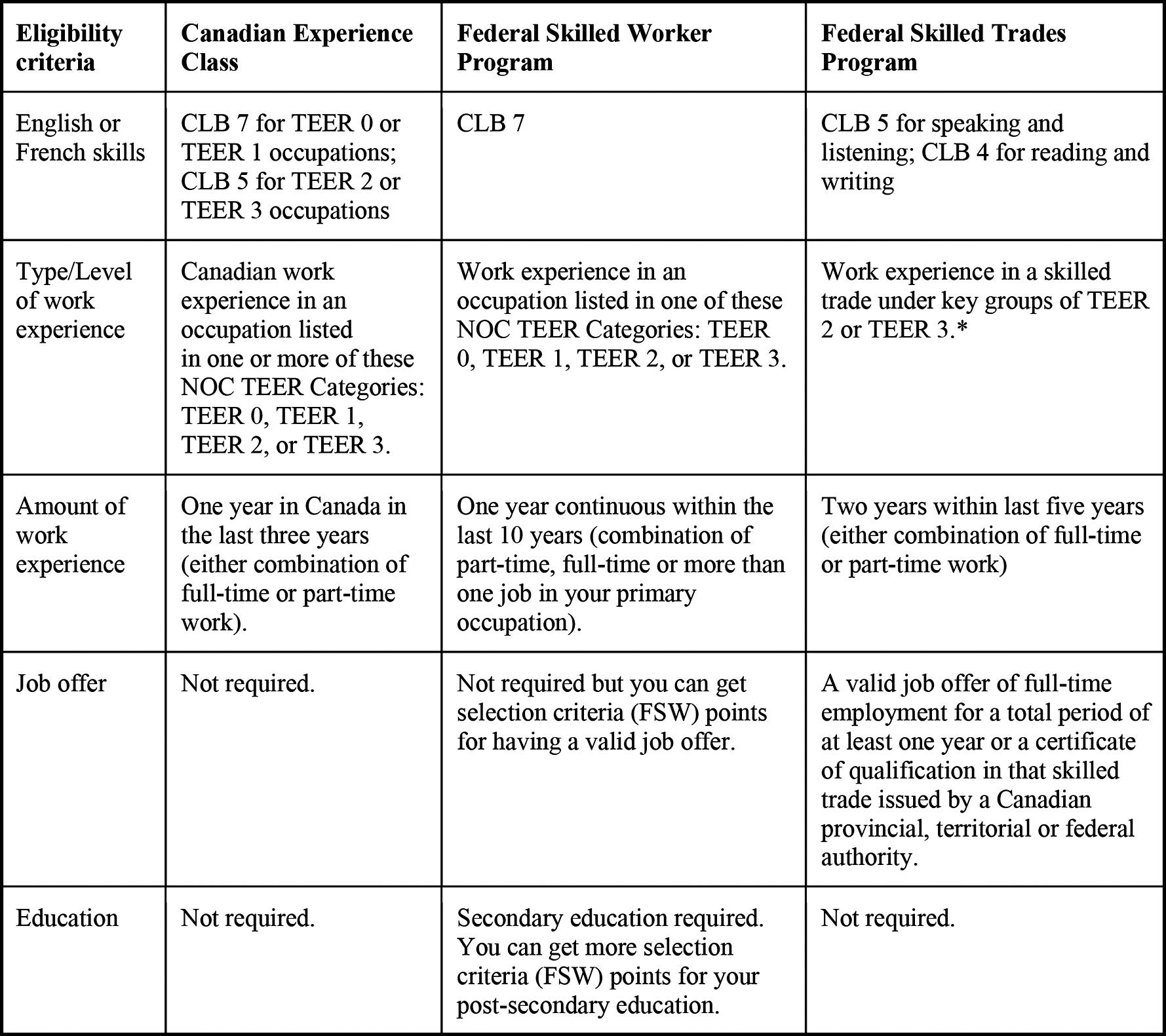
The change in NOC classification has resulted in the addition of sixteen occupations to the Express Entry system, while several others have been removed. The following occupations were added: payroll administration; dental assistants and dental laboratory assistants; nurse’s aides, orderlies, and patient services associates; pharmacy assistants; elementary and secondary school teacher assistants; sheriffs and bailiffs; corrections officers; bylaw enforcement and other regulatory officers; estheticians,
electrologists; residential and commercial installers; pest exterminators; other repairers and servicers; transport truck drivers; bus drivers, subway operators and other transit operators; heavy equipment operators; and aircraft assemblers and inspectors.
The following occupations were removed from Express Entry eligibility: performers, program leaders in recreation, sports and fitness as well as tailors, dressmakers, furriers, and milliners.
Minister Fraser on NOC 2021
Sean Fraser, Minister of Immigration, Refugees and Citizenship, spoke in favour
of the changeover to NOC 2021. “We are using all of the tools at our disposal to tackle labour shortages, particularly in key sectors like health care, construction, and transportation. These changes will support Canadians in need of these services, and they will support employers by providing them with a more robust workforce who we can depend on to drive our economy forward into a prosperous future. I’m thrilled to announce expanded pathways to permanent residence in Canada for these in-demand workers.”
Yes, things have changed. NOC 2021 has been implemented
and so have the challenges for potential applicants. Users are directed to examine the conversion charts and the impact of NOC 2021 on Express Entry. Good luck in your submissions.
Michael Scott is a Regulated Canadian Immigration Consultant (RCIC, R525678) who has 30 years of experience with Immigration Canada and the Manitoba Provincial Nominee Program. He currently works as a licensed consultant with Immigration Connexion International Ltd. Contact him at 204-691-1166 or 204227-0292. E-mail: mscott.ici@ gmail.com.


All rights reserved.
Annual subscription rate within Canada: $65.00.
For advertising inquiries, call 204-956-7845, or e-mail: E-mail: info@pilipino-express.com.


Over the years I have made a point to travel to the Philippines for many reasons and last month, I was in the Philippines with my daughter Cindy. We had a productive and wonderful time

Throughout the trip we had set aside blocks of times to meet with people to talk about immigration and acquiring different types of visas. In fact, we arrived at 5:00 a.m. in Manila and three hours later we were at a Jollibee meeting with people who have families here in Winnipeg.


After close to four hours of meetings, we headed over to the Mall of Asia where we had lunch with representatives of KFC in the Philippines. Cindy and I wanted to meet with this group because of their connection to Canada, in particular Winnipeg. Did you know that there are 16 KFC outlets in Winnipeg that are owned by a company in the Philippines?

After that wonderful lunch, Cindy and I checked into our hotel and went for one of several walks that we took in Pasay. On our second last day, we were in Pasay where we met Reynaldo Legaspi, Punong Barangay (Barangay Captain) of Barangay 145, Zone 16. We talked about grassroots services, politics, and we witnessed so many happy volunteers and staff who were eager to talk with us and about Canada.
Over the years I have built up a wonderful relationship with the Philippine Embassy here in Ottawa and they were very helpful in setting up a couple of meetings for me. The first one was with the Department of foreign affairs where we were able to discuss a wide variety of issues related to the relationship between Canada and the Philippines. Former Ambassador Robles took the time to meet with us over a lunch followed by a wonderful supper in Makati, which was followed by a desert in his home. It was Filipino hospitality at its best.
With the assistance of the ambassador and the embassy we had the honour to meet with Manila’s new mayor. Mayor “Honey” Lacuna was fabulous as we talked about issues like tourism and Canada’s growing Filipino community. After our meeting, Mayor Honey took us up to the recently opened clock tower where there is a relatively small but very impressive museum – a must-see if you happen to visit the City Hall grounds. We also went outside where a band was playing as we went to a marker where we recognized nine Canadians who lost their lives during WWII in

the Pacific theatre. I was really touched when
presented a key to me, as it was a wonderful gesture of friendship and truly appreciated.
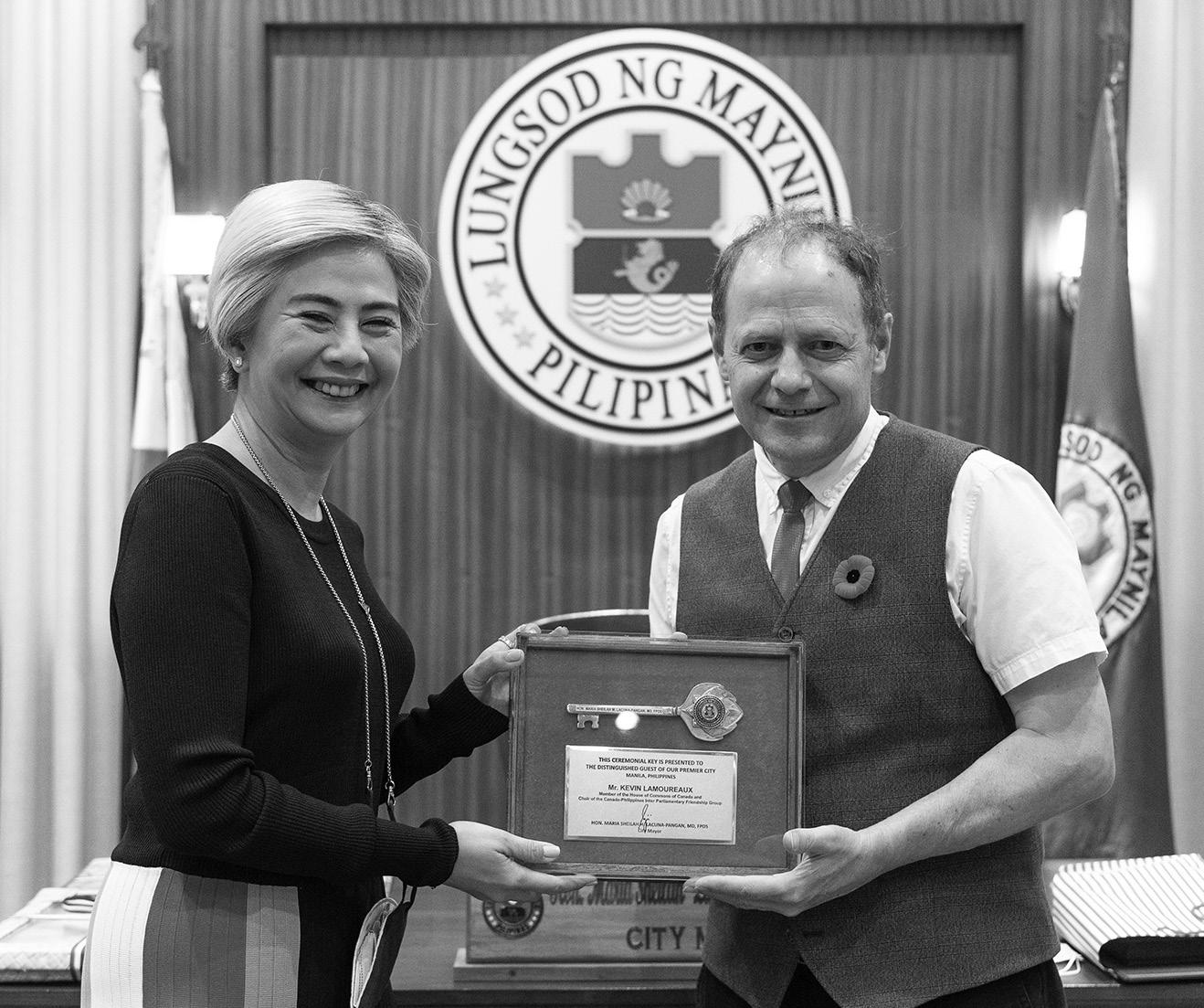
We did get a chance to go out to Bulacan for a day where we checked out an ANCOP village and met with Governor
Daniel Fernando. I should thank my ate Clarita for making those arrangements. As one would expect, we met with a number of representatives from the Canadian embassy dealing with the issues of immigration, trade and international aid.
Cindy and I really enjoyed meeting the many people in the

different parts of Manila to talk about coming to Canada and we look forward to seeing them again.

Finally, I would note that, like every tourist who goes to Metro Manila, Cindy and I enjoyed many different restaurants including Potato Corner (a fastfood restaurant that we now have
in Winnipeg). We did lots of walking in markets and even had the chance to ride on the MRT. Overall, Cindy and I enjoyed the people and the many things we were able to do. Wishing everyone a wonderful Christmas.
Kevin Lamoureux is the Member of Parliament for Winnipeg North.

Singer-actress Vina Morales appears to be introducing her new beau on social media with her recent posts on Instagram.

Netizens noticed photos of Morales with a man while spending sweet moments in Boracay island.

In one post, Morales was seen enjoying a sunset dinner to celebrate Thanksgiving.
“Toasting to what I’m thankful for. Happy thanksgiving! #thankful #grateful” she wrote in the caption.
In another post, Morales also posed for a photo with the same man while kayaking.
Morales has yet to confirm her relationship with the man.

In 2017, Morales ended her relationship with French boyfriend, Marc Lambert. She explained that distance took a toll on their romance.
“Being together in one place is a sacrifice that we aren’t yet ready to make, because of our respective obligations,” she said.
She was also previously linked to actor Robin Padilla, and businessman Cedric Lee, with whom she has a daughter.
 – ABS-CBN News
– ABS-CBN News

For 31 years, ABS-CBN produced heart-tugging episodes of Maalaala Mo Kaya (MMK) that touched the lives of many Filipinos around the world. But this is now coming to an end as its presenter Charo Santos officially announced that her show, Asia’s longest drama anthology, will end in December.

“Hindi na po mabilang ang nasalaysay na kuwento dito sa MMK — mga kuwentong totoo, mga salamin ng sarili ninyong buhay na nagbigay ng aral at ng panibagong pag-asa,” Charo said in her farewell message.
“Kami po ay tagapaghatid lang ng mga kuwento,” Charo said.
“Kung mauulit man ang lahat,
hindi po ako magdadalawang isip na piliin muli ang role na ito. Kulang po ang tatlumpu’t isang taon para magpasalamat sa inyo.”
Charo went on to thank not just the actors who portrayed the reallife characters of its letter senders, but also the people behind the success of the show -- the creatives and crew.
“Gusto ko pong magbigaypugay sa lahat ng nagpadala ng sulat, sa aming mga direktor, writers, researchers, production staff, at sa lahat ng naging bahagi ng aming programa.
“Sa mga artistang gumanap, maraming, maraming salamat. Sa management ng ABS-CBN, sa See MMK p11
Two popular rap artists from the Philippines recently visited Winnipeg for a one-night concert at Petrus Hall on November 25.
Aristotle Pollisco, known professionally as Gloc-9, is an award-winning Filipino rapper, singer and songwriter. Since launching a solo career in 2000, he has spawned hits such as Simpleng Tao, Love Story Ko, Hari Ng Tondo, Sirena, and others. He has also collaborated with other major OPM artists like the late Francis M for Lando, Noel Cabangon and Champ Lui Pio with SariSaring Kuwento, to name a few. His songs resonate with social and
political issues as well as Filipino values.

During their morning visit on 92.7 FM CKJS on November 24th, Gloc-9 said his songs “aim to make people think and not just listen.”

Meanwhile, Sean Patrick Ramos, known professionally as Shanti Dope, is an up-andcoming Filipino rapper, singer and songwriter. He started writing verses when he was 12, inspired by local rap artists who use song writing as a way to tell stories. Now at 21, he is behind popular songs Nadarang, MAU and Amatz
– By Lucille Nolasco Vina Morales with rumored new boyfriend







From page 7
endeavours.
PE: First, congratulations? Can you tell us the relevance of this award to you?
PO: The award is relevant because I can represent the AsianCanadian community and the good things we do through this recognition. It makes me feel thankful to be recognized for the work we have been doing out of passion and a strong belief in what we do – what a bonus! This award was not achieved on my own and is a result of the community support that has allowed me to use my gift and transform it into a platform to create a collective community engagement to make a positive impact in the community through the performing arts.
This award will be even more relevant if this inspires, empowers, and motivates people to make a positive difference in their communities through their own little ways. Every positive action creates a ripple effect – let’s all spark positivity, inspiration and empower one another!
PE: How do you plan to move forward with this award? Particularly regarding your advocacies and community involvement.
PO: We are in the process of selling tickets and seeking sponsorships and advertisement placements for our 2023 Concert for a Cause with the Winnipeg Symphony Orchestra for the benefit of Sistema Winnipeg.
Sistema Winnipeg is a daily, intensive, music education program that focuses on children with the fewest resources and greatest needs. It delivers musical training to children after school for over two hours a day, five days a week, at no cost to their families. Sistema Winnipeg encourages children to reach their full potential and inspires greater social change within the community.
We are also starting conversations for our 10th Concert for a Cause in 2024! More exciting details to come once the 2023 concert is done.
In addition, we are planning to start our endowment fund which will allow charitable giving for perpetuity. This will hopefully be up and running by early 2023.
PE: Please tell us about your upcoming annual fundraiser.
PO: My upcoming Annual Concert for a Cause 2023 will be with the Winnipeg Symphony Orchestra. I am so proud and honoured that the WSO will be accompanying me once again for the whole concert. The program for this year will be different compared to year’s past as we have a very nice surprise especially for our audiences from the Filipino community.
From page 8
aming mga sponsors at higit sa lahat sa inyong mga tagapanood, kayo po ang nagsabing makahulugan sa inyo ang aming ginagawa,” she added.
Ending her message, she said: “Salamat po sa lahat ng nakaraan at
The concert is on April 29, 2023 (Saturday), 7pm and will be at the Calvary Temple. This is a new venue, and a change from TecVoc.
Tickets are $30, which is a great price for a show with the full Winnipeg Symphony Orchestra, and more importantly, All proceeds will be donated to the beneficiary, Sistema Winnipeg.
Tickets can be bought by contacting Paul: paulkelvinong@ yahoo.com, or 431-3365486. Alternatively, you can connect with Paul through Facebook (Paul Ong, Paul Kelvin Ong, Paul Ong Productions) or Instagram (@ itspaulong).

We will also have Sistema Winnipeg and other students perform during the concert which is an important part of the program. Aside from raising funds for charitable donations, it is as important to use the concert in providing youth the opportunity to perform alongside the WSO, hoping that this empowers them to pursue their talents and to plant a seed of how they can use it to create a positive impact in the community.
PE: Anything else you would like to impart to our readers?
PO: I just want to express my sincere thanks to our Filipino community whose support has allowed me to use the concert as a platform. Without everyone’s support, we would not be able to achieve what we have, together.
I view this not as an award for myself, but an award to our community whose collective support has been instrumental in bringing us where we are today.
I hope we will continue to work together in our journeys ahead.
Maraming salamat. I value and appreciate everything and thank you for giving me the privilege to use my gift in this capacity. Hope to see you all on April 29th for our Concert for a Cause 2023! ***
The other CBC Manitoba Future 40 awardees for 2022 are:
Dustin Murdoch – a physiotherapist from Fisher River Cree Nation
Ben Carr – a Divisional Principal at Seven Oaks
Dr. Melanie Lalonde – a productive research scientist
Tracie Leost – a Métis leader, activist, and athlete
Dr. Kaarina Kowalec – a scientist at the University of Manitoba
Joseph Chaeban – a dairy scientist who came to Canada as a Lebanese refugee
Filiz Koksel – a food scientist and innovator
Dr. Brett Houston – a hematologist
Rylee Nepinak – a grassroots organizer helping aboriginal youth from Sagkeeng First Nation
By: Lucille Nolasco-Garrido
sa anumang paraan na maaaaring pa tayong muling magkita,” she said. “Ito po si Charo Santos, ang inyong tagahanga at tagapagkuwento.”
Maalaala Mo Kaya will release a three-part special until December 10, its last day of airing. MMK’s first episode aired in 1991.
Source: PUSH

From the earliest fairy tales of genies and fairy godmothers, we all have wishes that we would love to see magically happen. Luckily in feng shui there is a wonderful technique for activating the energies associated with all of the usual aspirations that everyone wants: love, wealth, health, happiness, good fortune.
It involves using gems and crystals, and when used correctly, can almost magically bring about anything you desire.
Gems and crystals are powerful symbols of our earthly desires, and they are powerful activators. Gems are regarded as earth’s most beautiful and precious energy represented in clear, beautiful, sparkling stones.

These stones are widely regarded as storehouses of this beautiful earth energy – and potent objects to ground your deepest desires and help them come to fruition.
Don’t believe me? Think about one of the most common gem activators. It’s the engagement ring, a serious activator and symbol of love and commitment.
The size, quality, and beauty of the stone is often used to transmit the intent and desire of the man to make his intentions known to a woman, which in this
case, is marriage.
But stones and crystals can be used to manifest more than just marriage.
Used in your life, gems bring precious earth energy to your goals and dearest wishes!
It’s better if you find one beautiful stone and make a single wish with great focus and intention, such as a large faux diamond, geode or rose quartz heart.
Keep your focus on this intention until you see it come to fruition. Also, be sure you give plenty of attention to your gem and don’t disregard your crystals.
To get the best results, place your wish fulfilling gem where you see it and activate it regularly, such as at your bedside table, your desk (my favourite), or your living room. When placed here, you can put your gems under a light to help activate them.
You can put your gem in a window where the sunlight will hit your gem and activate it. It’s especially helpful to raise the gem up so that the light can penetrate and activate the entire crystal.
As wonderfully as these magic activators work, you must be sure to do your part, too. If you’re interested in creating opportunities for love, get out
there and circulate. If you want to lose weight, be sure to modify your eating and exercise more. But support it with a gem.
So now that you have learned this wonderful — and potent — feng shui tip, it’s your turn to find a gem and activate any and all of your wishes!
Select one special POWER gem.
When you have a dear desire, such as to get married or attract love, select a large faux diamond and place it next to your bed or on your desk – anywhere you’ll see it and can activate it with light. Treat it special and keep it clean. Focus on your desire to attract your perfect mate. You can do this with any special wish or desire you have. If it’s a work-related wish you have, keep your gem at work where you see it often.

Surround your Chinese astrology sign with gems. Looking to enhance yourself or members of your family? Create a gem bowl with a variety of gems. Place small figures of each family member’s astrology animal sign in the bowl to use as an enhancer. You or your family will find yourself receiving more opportunities and exciting new ventures coming to you as a result.
See your ship come in with gems.
Sailing ships have long been activators of arriving wealth. Take

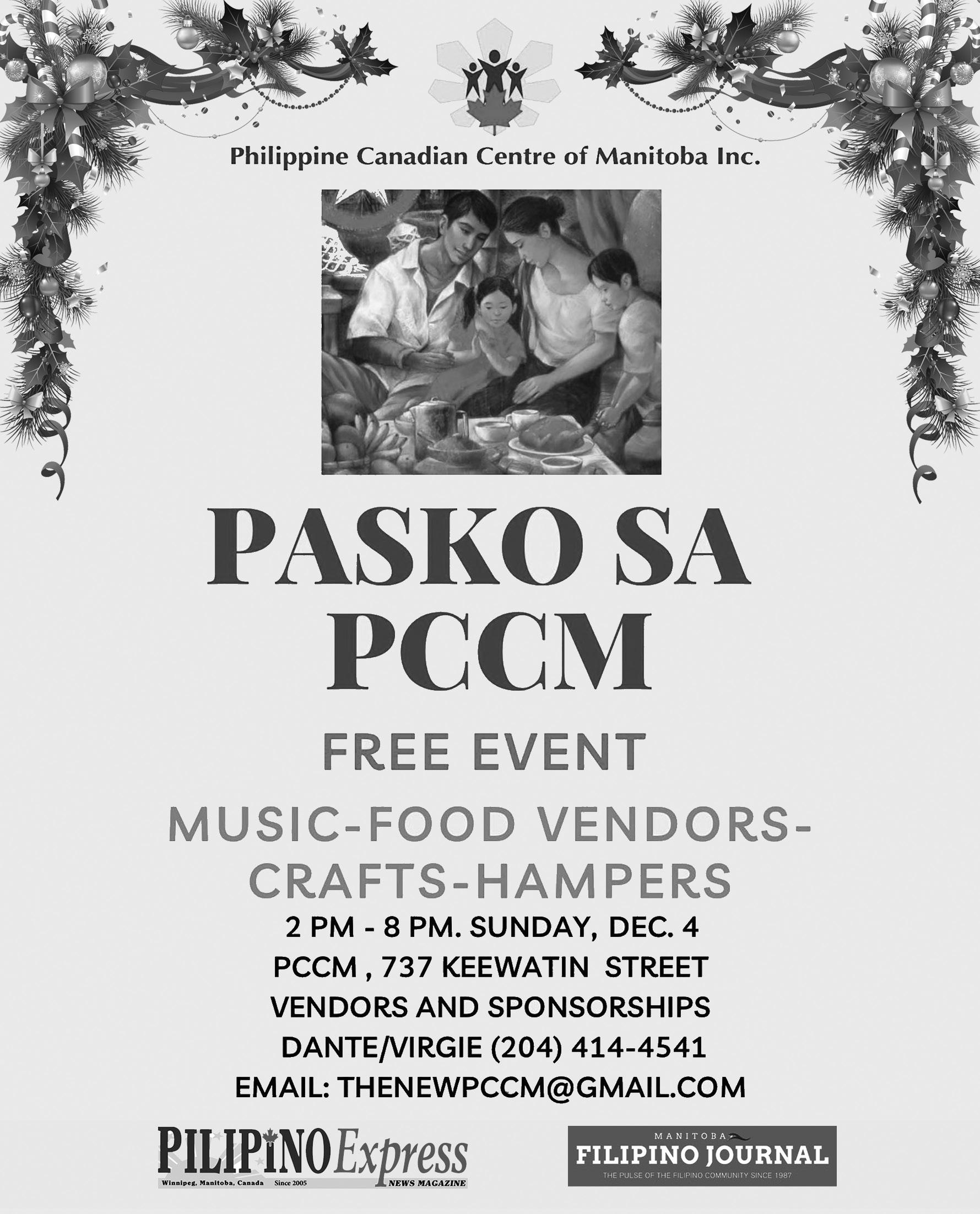
that one step further by loading your ship figurine with crystals or faux diamonds. Crystals placed on the body of a ship figure are a great way to represent your wealth sailing into your life. Make sure ships seem to be sailing into the house, office, or room.
Choose gem colours by your wish.
Green crystals will bring health and family luck, red crystals bring fame and recognition for your desire (perfect for an ambitious person!), blue crystals can be used for business opportunities and career advancement (and the money that comes with it), white crystals bring luck with children, creativity, and helpful people and mentors, yellow, pink and amber bring opportunities for education, love, and romance. Pink is especially powerful for bringing love to your life.
Pick your gems with care.
Always choose clear, sparkling and beautiful gems that appeal to you. Glass, crystal, and natural gems are all perfectly acceptable activators of your wishes. Make sure the gems are
not cloudy or unappealing to you in any way. Keep them clean and dust-free.
Put your gems to work. Have a certain business you’re looking to attract? Place the name of that business, a picture of the person associated with the business, or a business card on top of your diamond.
If you want a commitment from a reluctant suitor, place a picture of your beloved on top of the diamond. Is a certain clothing size what you’re after? Use a green-coloured gem and place a picture of your slimmer self on the gemstone.
Kathryn Weber has over 20+ years of feng shui study, practice and professional consultation. Her witty, no-nonsense style appeals to audiences, making her a popular speaker and radio show guest. She is often called on by media to explain feng shui in down-to-earth terms, and has been featured in Seventeen, First for Women, Faces, Conceive, Martial Arts Professional, and Natural Health magazines, and on websites around the world.



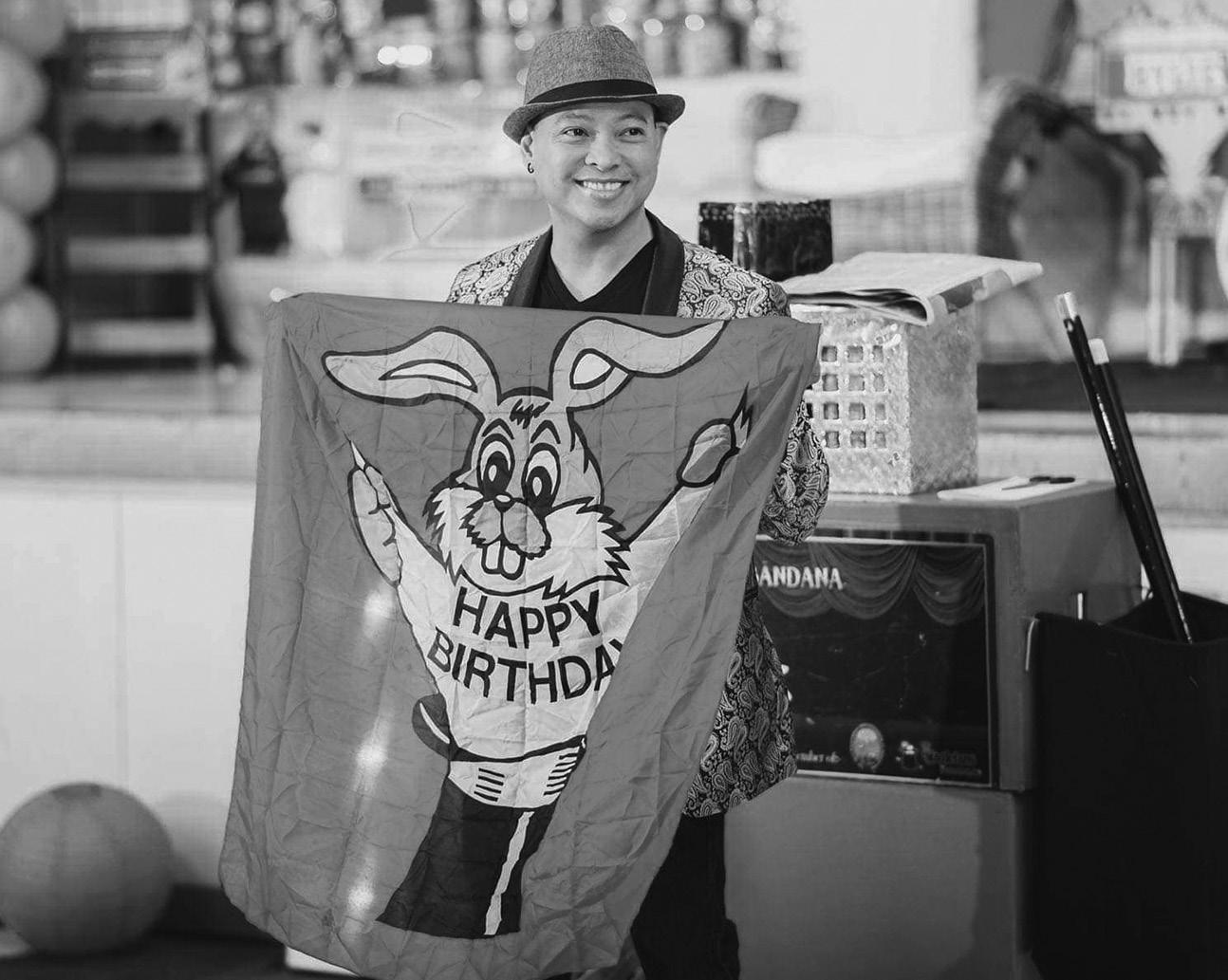
From having no interest in being a magician to being a skillful one, you could say magic played a part in Jose Quinto’s professional career.
Known as Jojo Bandana, the Pinoy magician’s weekends are almost always full of kiddie parties infused with this type of entertainment. But this wasn’t always so.
Before immigrating to Canada in 2010, Quinto used to work for one of the biggest banks in the Philippines, just like his father who served as a senior executive in the banking industry.
It was not until he met a client who invited him to a Magicians Incorporated anniversary that his interest was piqued.
“I was amazed with all the magicians performing. So, after the event I talked to the founder, Enrique Nadela, otherwise known as BUrIk,” Quinto said.
“I told him I want to learn some magic tricks. So, he taught me some kiddie magic tricks. At first it’s just for fun, to show our clients in the bank. When I found out that a magician in Manila makes good money, I was surprised. So, with the help of other magicians, I started buying VHS tapes and instructional videos. And I told myself that someday I will become a well-known magician in the Philippines. So, I quit my fulltime job in the bank to become a full-time magician. And the rest is history.”
Here in Winnipeg, Quinto started performing in 2012 when he was invited to a 50th birthday party. He received very encouraging feedback and so told
himself to perform again, like what he had been doing back in the Philippines.
“So far and thank God, all my parties or clients are all happy. And leaving them mesmerized by my magic act and wanting for more.”

Asked what for him, is magic, Quinto had this to say: “I do believe in magic in many ways. The real magic is when people who watched you will recognize or approach you after your show and congratulate you for a job well-done. When they recommend you and spread the word about your one-of-a-kind magic show.
My every performance is memorable. I always give my 100%. And I always thank God for the talent he entrusted to me.”
As far Quinto knows, he is the only Filipino magician in Winnipeg. You can contact him through his Facebook page: Magic of Jojo Bandana or send him an e-mail: magicofjojobandana17@ gmail.com

 – By Lucille Nolasco
– By Lucille Nolasco





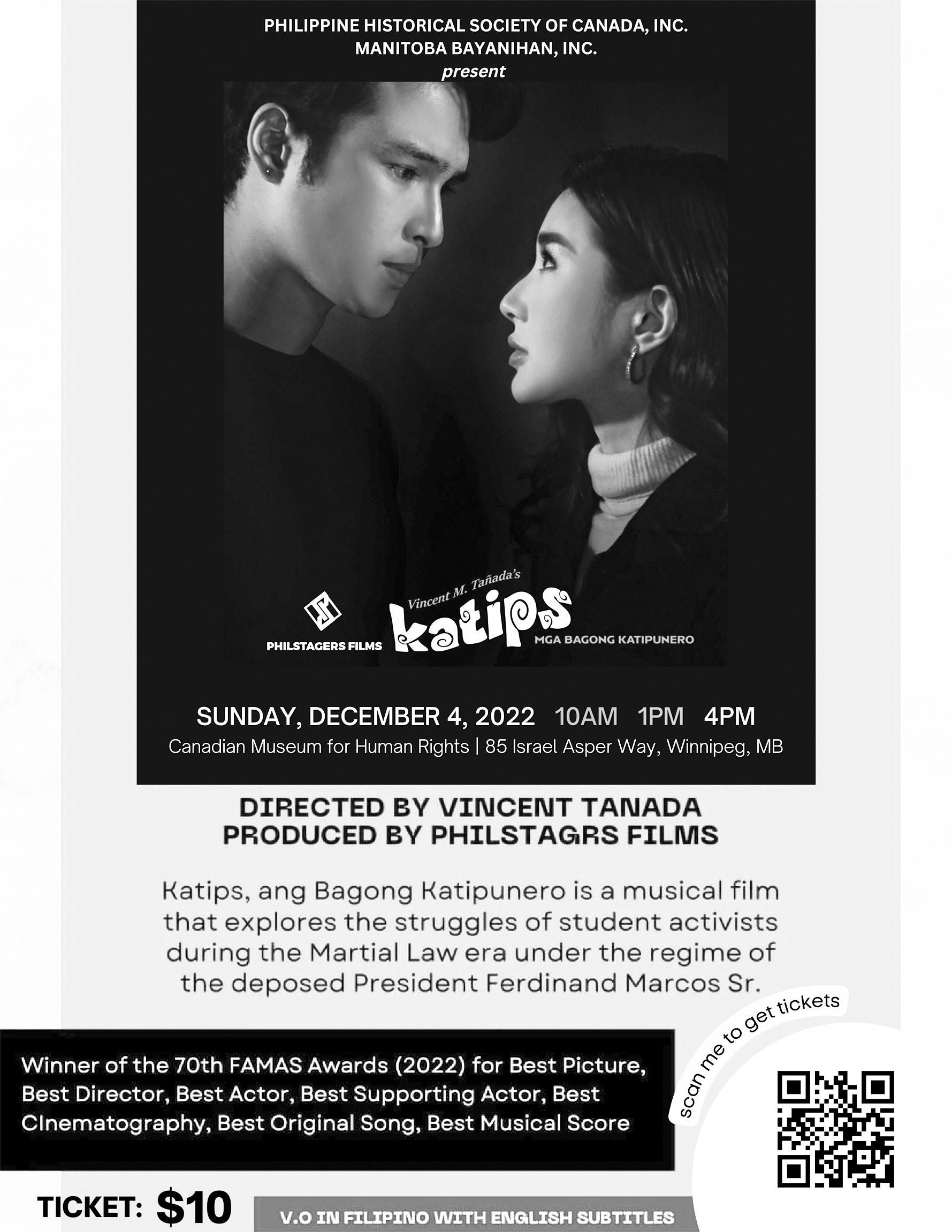
On November 25, the Philippine Canadian Centre of Manitoba (PCCM) and the Filipino Inter-Church Fellowship Winnipeg (FICFW) held a Dedication Service to welcome the newly elected city officials headed by Mayor Scott Gillingham, and the School Trustees namely: Dante Aviso (Ward 5), Perla Javate (Ward 6)
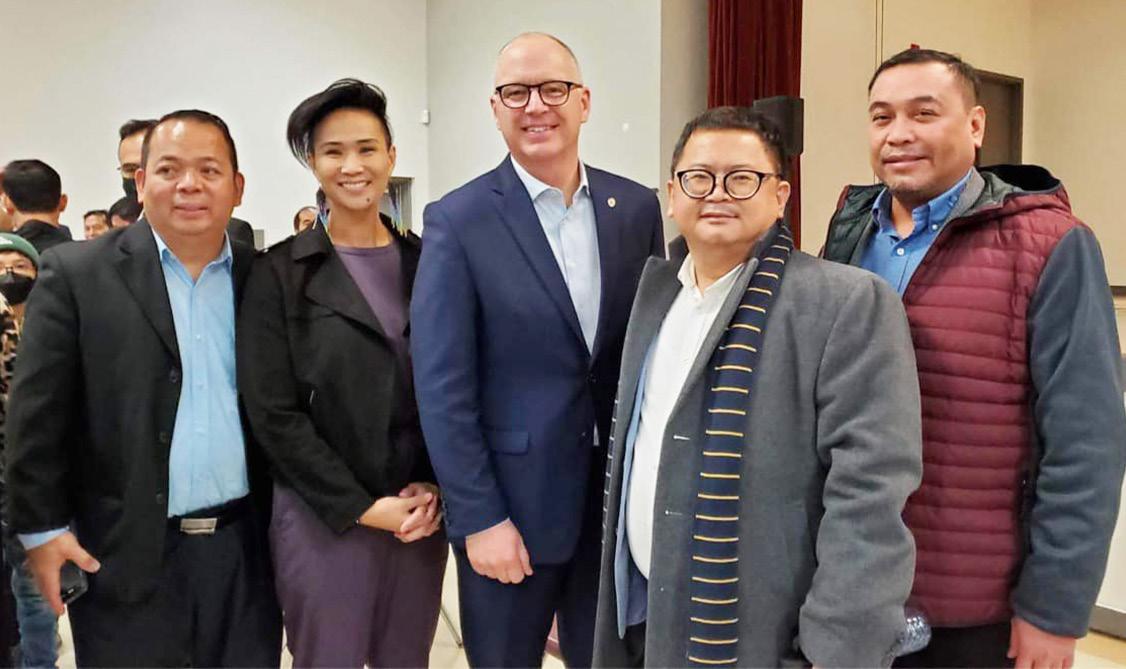
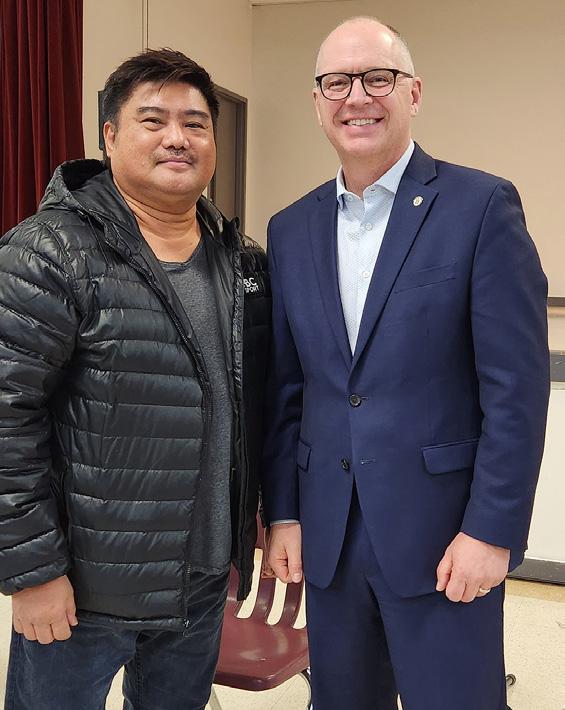



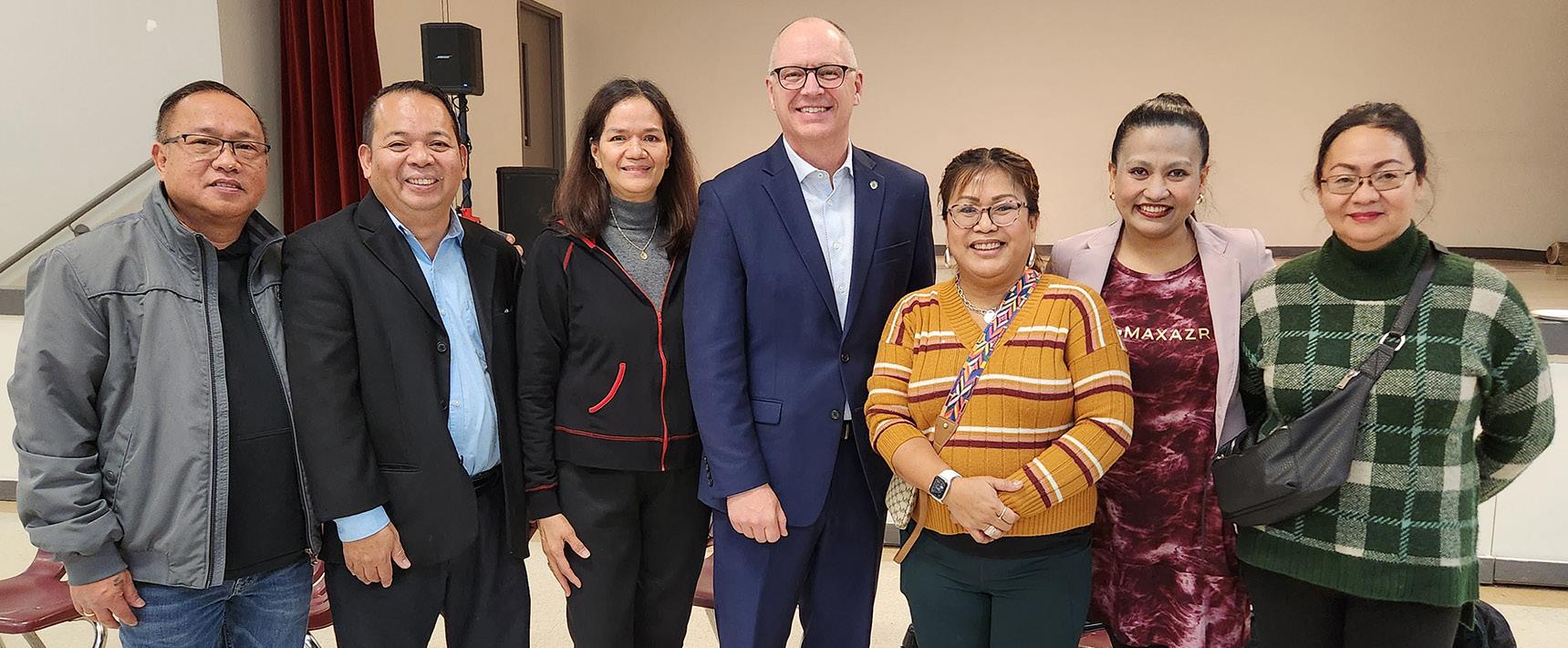



and Ann Evangelista (Ward 9).
Re-elected Councillor Vivian Santos (Point Douglas Ward) also graced the occasion.
PCCM President Virgie Gayot extended the welcome to the elected city officials on behalf of the Filipino Canadian community offering goodwill and cooperation as they fulfill their mandate to serve Winnipeg. This
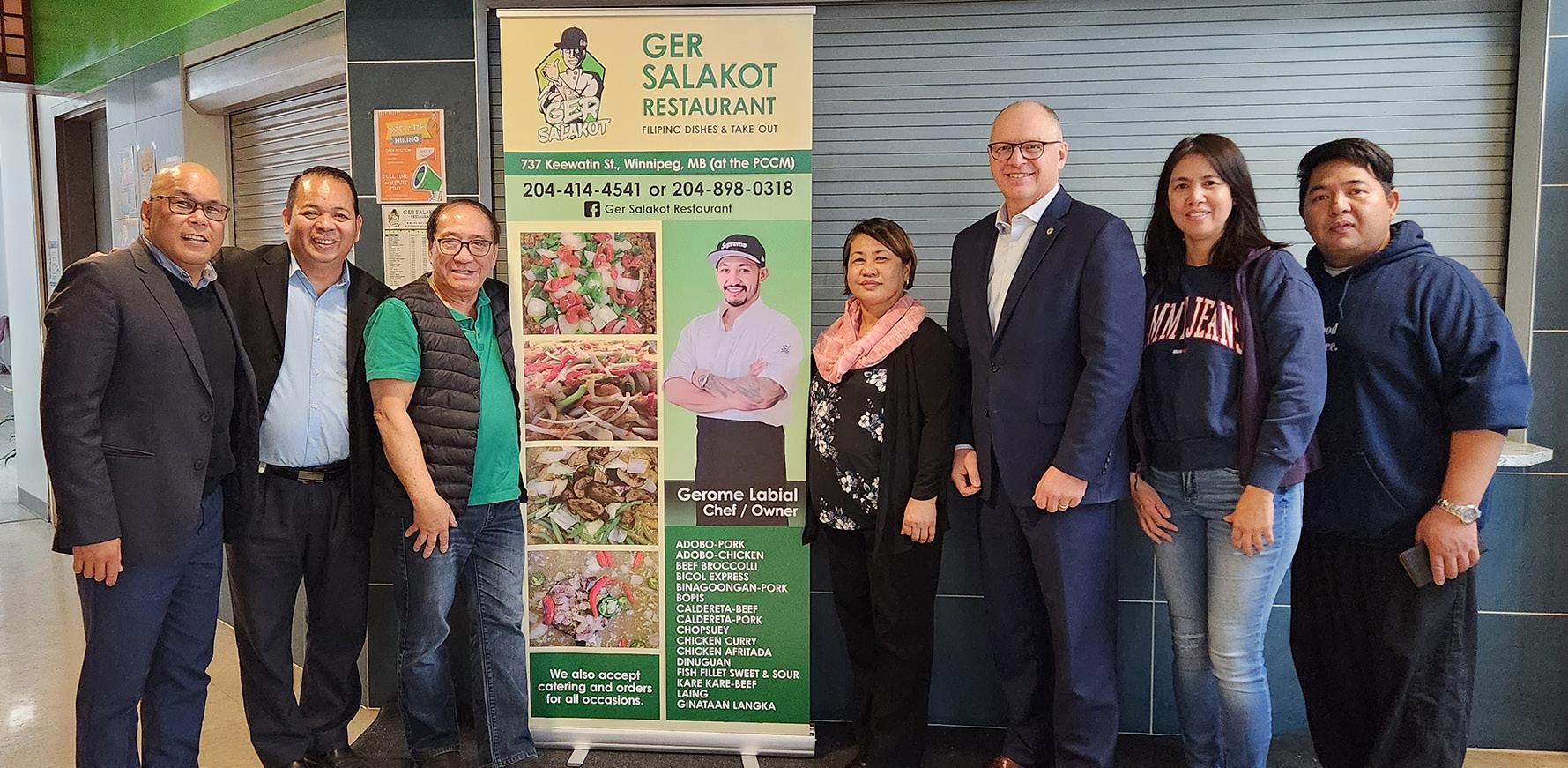
was cordially reciprocated by the messages from the guests.
The dedication prayer was led by FICFW. Musical highlights were provided by musician Paolo Camus (violin) who opened the program with Morning Has Broken; vocalists Khristine Torres and Jobz Torres delighted the guests with their rendition of The Prayer
